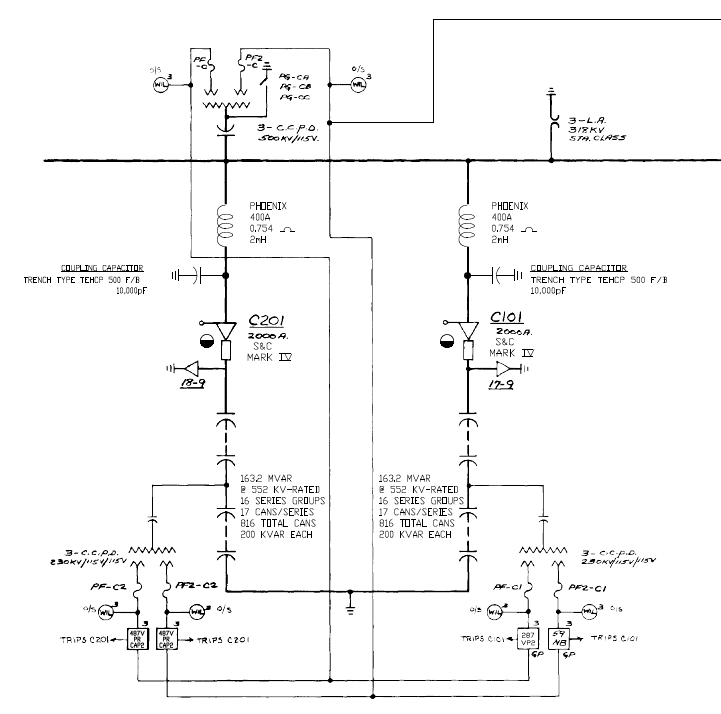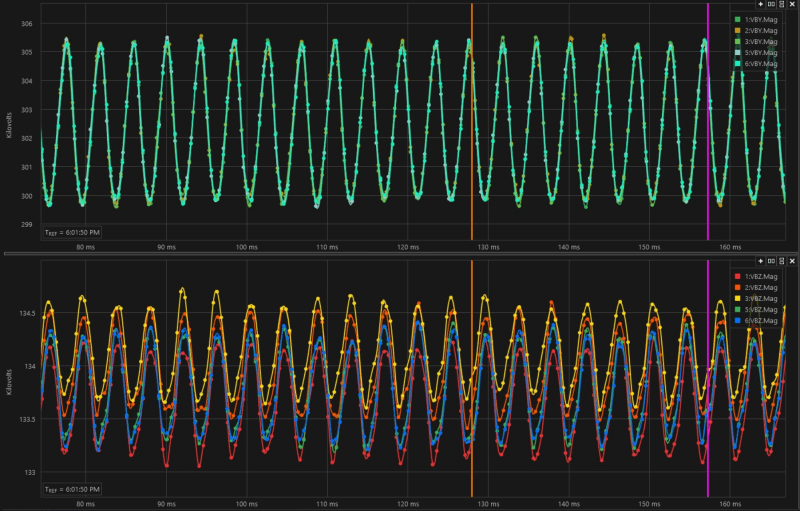I was called out to investigate a b-phase cap bank trip,It is one of the original caps on our system that has just always been an issue. It is an externally fused, grounded cap with two SEL 487V's using bus and mid-cap potential for voltage differential. I am being told the mid-cap ccvts have been tested many, many times as well as the cans themselves. There is no visible issues that we can find with it and at this point just looking for some suggestions. Maybe someone has ran into something similar.
The top waveform is the B-phase bus potential and the bottom waveform the B-phase mid cap potential at different times prior to it tripping. I aligned them for visual purposes. The mid-cap potential is steadily decreasing, leading to a positive differential. I sat there and watched it slowly creep up until it tripped. It isn't a very violent increase just slow and steady. The cap in question is cap 2, protected by C201 as seen below.
Trip threshold is 0.57 V/sec.
Bus CCVT ratio 4348 - 500kV/115V
Mid-Cap CCVT ratio 2000 - 230kV/115V
KBV Correction Factor - 1.0307 (Existing, commissioned K Set Value)
Just to clarify this is a comtrade file. It does seem like there may be some 4th harmonic involvement here.


The top waveform is the B-phase bus potential and the bottom waveform the B-phase mid cap potential at different times prior to it tripping. I aligned them for visual purposes. The mid-cap potential is steadily decreasing, leading to a positive differential. I sat there and watched it slowly creep up until it tripped. It isn't a very violent increase just slow and steady. The cap in question is cap 2, protected by C201 as seen below.
Trip threshold is 0.57 V/sec.
Bus CCVT ratio 4348 - 500kV/115V
Mid-Cap CCVT ratio 2000 - 230kV/115V
KBV Correction Factor - 1.0307 (Existing, commissioned K Set Value)
Just to clarify this is a comtrade file. It does seem like there may be some 4th harmonic involvement here.


